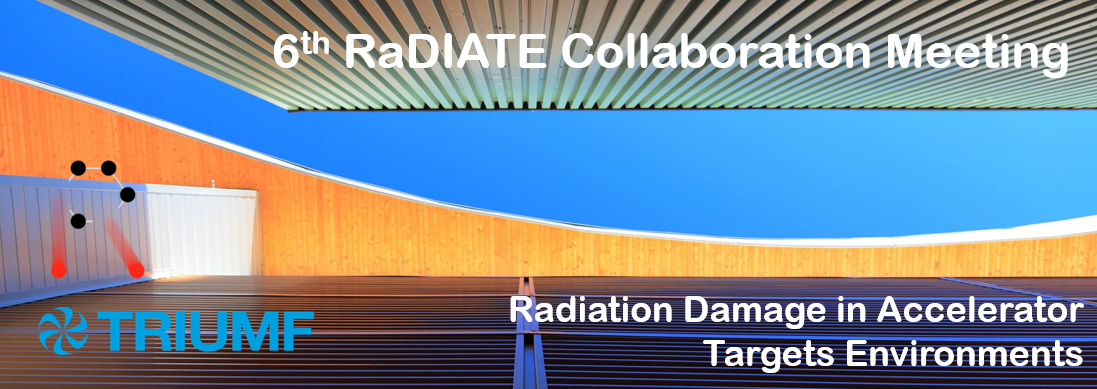Speaker
Taku Ishida
(J-PARC)
Description
An &alpha+&beta dual-phase titanium alloy Ti-6Al-4V (ASTM Grade 5 or its Extra Low Interstitial grade 23) is widely utilized as the beam window material for high-intensity particle accelerators, because of its low density and high specific strength. However, it is known that proton beam irradiation with only 0.1 dpa-NRT rapidly initiates radiation-induced hardening and loss of ductility. High-intensity beam penetration (order of 10^14 protons-per-pulse) through the beam window in the area of a few tens of mm^2 area causes a few hundred MPa compressive stress, and initiates propagation of shock waves in a few microsecond cycle. Resultant high cycle fatigue can lead to failure of the radiation-embrittled beam window in a very short time scale. There are indications that single-HCP phase &alpha-Ti alloys, such as Grade-6 Ti-5Al-2.5Sn, provide preferable ductility compared to the &alpha+&beta dual phase Ti-6Al-4V. Recent work by some of the authors indicates that this is due to radiation induced &omega-embrittlement that occurs only in the &beta phase [1]. If improved radiation tolerance of the single &alpha-phase alloy is realized, it can be adopted as the beam window material in future accelerators with upgraded power, which should bear damage levels of one to a few dpa-NRT within one year operation. It may also be attractive for certain components in fusion reactors.
In order to improve the tolerance against radiation embrittlement of titanium alloys, we firstly try an oxide dispersion-strengthen (ODS) approach on titanium, which developed in other alloy systems for fusion material science based on Fe, V, Cu etc. To start with, we utilize single &alpha-phase pure titanium as the simplest case. By following the method developed on pure vanadium by one of the authors[2], pure titanium powder with addition of ~2 wt-% yttrium is processed with mechanical alloying (MA). It aims to convert solute oxygen and nitrogen impurities, which are originally contained in the base powder (and will become harmful sources to decrease ductility), to form a large number of nano-scale precipitates, working as sink sites of radiation-induced defects. The MA process dissolves all added Y into the base Ti matrices. Subsequent thermo-mechanical treatments cause reactions between solute Y and O/N impurities, resulting in oxide (Y2O3) and nitride (YN) dispersed in the base Ti matrices as nano-scale precipitates. In this presentation, our exploratory productions of the ODS-titanium alloy, aiming to optimize the MA processing and thermomechanical treatments (such as sintering), will be reported.
[1] “New Aspect of Radiation Damage Behavior on Titanium Alloys under High-Intensity Proton Beam Exposure”, T.Ishida, E.Wakai, A.Casella, D.Edwards, D.Senor et al, ICFRM-19, San Diego,U.S.A., Oct.29, 2019.
[2] “Microstructure Control to Improve the Resistance to Radiation Embrittlement in Vanadium”, H.Kurishita et al., J. Nucl. Mater. 343 (2005) 318-324.
Primary author
Taku Ishida
(J-PARC)

